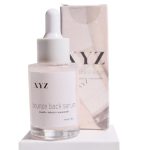Unveiling The Controversial Trend: Skin Bleaching In The 1920s – Discover The Impact And Take Action Now!
Skin Bleaching in the 1920s: Unveiling the Dark Side of Beauty Standards
Introduction
Dear Readers,
2 Picture Gallery: Unveiling The Controversial Trend: Skin Bleaching In The 1920s – Discover The Impact And Take Action Now!
![Picture of: PDF] Skin Bleach and Civilization: The Racial Formation of](https://pbmulet.info/wp-content/uploads/2023/09/pdf-skin-bleach-and-civilization-the-racial-formation-of_0.png)
![Picture of: PDF] Skin Bleach and Civilization: The Racial Formation of](https://pbmulet.info/wp-content/uploads/2023/09/pdf-skin-bleach-and-civilization-the-racial-formation-of.png)
Welcome to our insightful journey into the world of beauty standards in the 1920s, specifically focusing on the controversial practice of skin bleaching. In this article, we will delve into the historical context, reasons behind its popularity, and the consequences it had on individuals and society as a whole. Join us as we shed light on this dark aspect of beauty culture and explore the impact it has had on our perception of beauty.
Table: Skin Bleaching in the 1920s
Aspect
Details
![skin bleaching 1920s - PDF] Skin Bleach and Civilization: The Racial Formation of skin bleaching 1920s - PDF] Skin Bleach and Civilization: The Racial Formation of](https://pbmulet.info/wp-content/uploads/2023/09/pdf-skin-bleach-and-civilization-the-racial-formation-of_0.png)
Image Source: cloudfront.net
What
Definition and purpose of skin bleaching in the 1920s
Who
The individuals involved and their motivations
When
The timeline and societal context of skin bleaching in the 1920s
Where
The geographical spread and cultural influences
Why
The underlying reasons and societal pressures
![skin bleaching 1920s - PDF] Skin Bleach and Civilization: The Racial Formation of skin bleaching 1920s - PDF] Skin Bleach and Civilization: The Racial Formation of](https://pbmulet.info/wp-content/uploads/2023/09/pdf-skin-bleach-and-civilization-the-racial-formation-of.png)
Image Source: cloudfront.net
How
The methods and products used for skin bleaching
Advantages and Disadvantages (Pros and Cons)
The benefits and drawbacks of skin bleaching
FAQ
Frequently asked questions and their answers
Conclusion
A call to action and reflection on the consequences of skin bleaching
Final Remarks
A disclaimer and closing thoughts
What is Skin Bleaching in the 1920s?
In the 1920s, skin bleaching referred to the practice of using chemical substances or natural remedies to lighten one’s skin tone. The purpose was to achieve a fair complexion, which was seen as the epitome of beauty during that era. The concept of skin bleaching was heavily influenced by societal standards and the colonial history of the time.
Who Engaged in Skin Bleaching in the 1920s?
The individuals who engaged in skin bleaching during the 1920s were mostly women from various racial backgrounds. The motivations behind their decision to bleach their skin varied, ranging from personal desires for societal acceptance to the pressure to conform to Eurocentric beauty standards dictated by the media and popular culture.
When Did Skin Bleaching Gain Popularity in the 1920s?
Skin bleaching gained significant popularity in the 1920s, coinciding with the rise of the beauty industry and the increasing influence of media on beauty standards. This decade witnessed a shift in societal attitudes towards beauty, with fair skin becoming a symbol of wealth, refinement, and social status.
Where Did Skin Bleaching Take Place in the 1920s?
Skin bleaching was not limited to a specific geographical location in the 1920s. It was practiced in various parts of the world, including Europe, North America, Africa, and Asia. The cultural influences and specific beauty ideals differed from region to region, but the desire for a fair complexion was a common thread that connected individuals across continents.
Why Did Skin Bleaching Become Popular in the 1920s?
The popularity of skin bleaching in the 1920s can be attributed to multiple factors. The colonial era and the influence of Western beauty standards played a significant role in shaping the perception of beauty, leading individuals to believe that fair skin was superior. Additionally, the rise of the beauty industry and the portrayal of fair-skinned celebrities further fueled the desire for lighter skin tones.
How Was Skin Bleaching Practiced in the 1920s?
The methods of skin bleaching in the 1920s varied, ranging from the use of homemade remedies to commercially available products. Some common ingredients included hydrogen peroxide, lemon juice, and mercury-based creams. These substances were applied to the skin regularly, often leading to severe side effects and long-term damage.
Advantages and Disadvantages of Skin Bleaching in the 1920s
Advantages of skin bleaching in the 1920s:
Enhanced societal acceptance in certain contexts.
Feeling closer to the beauty ideals of the time.
Boosting self-confidence for individuals struggling with their appearance.
Perceived opportunities for success in personal and professional spheres.
Temporary fulfillment of societal expectations.
Disadvantages of skin bleaching in the 1920s:
Potential health risks and side effects.
Permanent damage to the skin, including discoloration and scarring.
Reinforcement of harmful beauty standards and discrimination.
Financial burden due to the cost of products and treatments.
Negative psychological effects, such as low self-esteem and identity issues.
FAQ about Skin Bleaching in the 1920s
Q: Was skin bleaching only popular among women in the 1920s?
A: No, skin bleaching was practiced by individuals of various genders, although it was more prevalent among women.
Q: Did skin bleaching have any long-term health consequences?
A: Yes, the use of toxic substances in skin bleaching products could lead to severe health issues, including organ damage and skin disorders.
Q: Were there any alternatives to skin bleaching in the 1920s?
A: Yes, there were alternative beauty practices, such as using cosmetics to enhance natural features and embracing one’s natural skin tone.
Q: Did skin bleaching become less popular after the 1920s?
A: Skin bleaching continued to be practiced in various forms throughout the 20th century and into the present day, although societal attitudes and beauty standards have evolved.
Q: Are there any modern-day repercussions of the skin bleaching trend in the 1920s?
A: Yes, the legacy of the skin bleaching trend can still be seen in the perpetuation of colorism, discrimination based on skin tone, and the ongoing pressure to conform to narrow beauty ideals.
Conclusion
In conclusion, the practice of skin bleaching in the 1920s was deeply rooted in societal expectations and the desire to conform to Eurocentric beauty standards. However, it is crucial to understand the negative consequences it had on individuals’ physical and mental well-being, as well as its contribution to the perpetuation of harmful beauty ideals. It is our responsibility to challenge and redefine these standards, promoting inclusivity and acceptance of diverse beauty in all its forms.
Final Remarks
Dear Readers,
As we conclude our exploration of skin bleaching in the 1920s, it is important to reflect on the lessons we can learn from history. Let us strive for a society that celebrates and embraces the unique beauty of every individual, free from the constraints of narrow beauty standards. Remember, true beauty shines from within, and it is our diversity that makes us truly extraordinary.
This post topic: Skin Care


